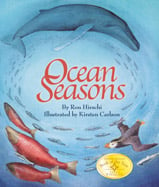Alignment to Standards for NY

| Grade | Number | Standard |
|---|---|---|
| K,1,2,3,4 | K-4..3.1a (iv) | claws, shells, spines, feathers, fur, scales, and color of body covering enable some animals to protect themselves from predators and other environmental conditions, or enable them to obtain food |
| K,1,2,3,4 | K-4..3.2a | Individuals within a species may compete with each other for food, mates, space, water, and shelter in their environment. |
| K,1,2,3,4 | K-4.1.1a(iii) | Natural cycles and patterns include the length of daylight and darkness varying with the seasons |
| K,1,2,3,4 | K-4.1.1a(iv) | Natural cycles and patterns include weather changing from day to day and through the seasons |
| K,1,2,3,4 | K-4.2.2a | Plants and animals closely resemble their parents and other individuals in their species. |
| K,1,2,3,4 | K-4.3.1a | Each animal has different structures that serve different functions in growth, survival, and reproduction. |
| K,1,2,3,4 | K-4.3.1a (i) | wings, legs, or fins enable some animals to seek shelter and escape predators |
| K,1,2,3,4 | K-4.3.1a (iii) | eyes, nose, ears, tongue, and skin of some animals enable the animals to sense their surroundings |
| K,1,2,3,4 | K-4.3.1a (vi) | the characteristics of some animals change as seasonal conditions change (e.g., fur grows and is shed to help regulate body heat; body fat is a form of stored energy and it changes as the seasons change) |
| K,1,2,3,4 | K-4.3.1c | In order to survive in their environment, plants and animals must be adapted to that environment. |
| K,1,2,3,4 | K-4.3.1c (iii) | animal adaptations include coloration for warning or attraction, camouflage, defense mechanisms, movement, hibernation, and migration |
| K,1,2,3,4 | K-4.4.1a | Plants and animals have life cycles. These may include beginning of a life, development into an adult, reproduction as an adult, and eventually death. |
| K,1,2,3,4 | K-4.4.1e | Each generation of animals goes through changes in form from young to adult. Some insects change from egg to larva to pupa to adult. |
| K,1,2,3,4 | K-4.4.1f | Each kind of animal goes through its own stages of growth and development during its life span. |
| K,1,2,3,4 | K-4.4.1g | The length of time from an animalês birth to its death is called its life span. Life spans of different animals vary. |
| K,1,2,3,4 | K-4.4.2a | Growth is the process by which plants and animals increase in size. |
| K,1,2,3,4 | K-4.4.2a (i) | animals convert food to heat and motion |
| K,1,2,3,4 | K-4.4.2b | Food supplies the energy and materials necessary for growth and repair. |
| K,1,2,3,4 | K-4.5.1b | An organismês external physical features can enable it to carry out life functions in its particular environment. |
| K,1,2,3,4 | K-4.5.2b | Animals respond to change in their environment, (e.g., perspiration, heart rate, breathing rate, eye blinking, shivering, and salivating). |
| K,1,2,3,4 | K-4.5.2d | Some animals, including humans, move from place to place to meet their needs. |
| K,1,2,3,4 | K-4.5.2e | physical animal characteristics by changing environmental conditions: fat storage in winter, coat thickness in winter, camouflage, shedding of fur. |
| K,1,2,3,4 | K-4.5.2f | Some animal behaviors are influenced by environmental conditions:nest building, hibernating, hunting, migrating, and communicating. |
| K,1,2,3,4 | K-4.6.1a | Green plants are producers because they provide the basic food supply for themselves and animals. |
| K,1,2,3,4 | K-4.6.1b | All animals depend on plants. Some animals (predators) eat other animals (prey). |
| K,1,2,3,4 | K-4.6.1c | Animals that eat plants for food may in turn become food for other animals. This sequence is called a food chain. |
| K,1,2,3,4 | K-4.6.1d | Decomposers are living things that play a vital role in recycling nutrients. |
| K,1,2,3,4 | K-4.6.1e | An organismês pattern of behavior is related to the nature of that organismês environment, including the kinds and numbers of other organisms present, the availability of food and other resources, and the physical characteristics of the environment. |
| K,1,2,3,4 | K-4.6.1f | When the environment changes, some plants and animals survive and reproduce, and others die or move to new locations. |
| K,1,2,3,4 | K-4.6.2b | The Sunês energy is transferred on Earth from plants to animals through the food chain. |